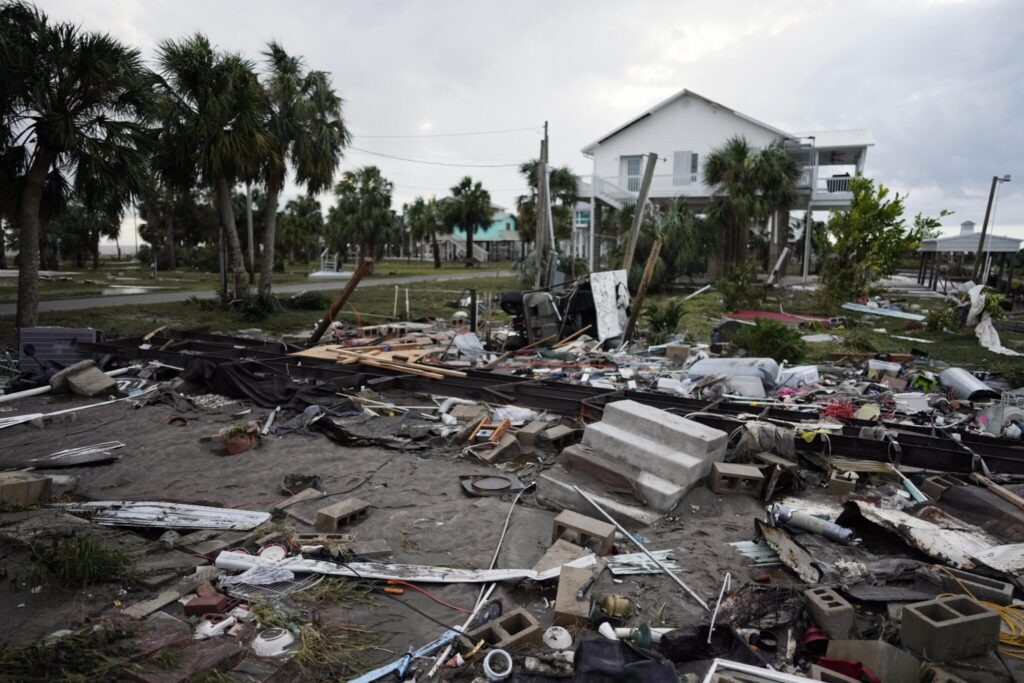Tropical Storm Idalia on Thursday drenched the Carolinas with torrential rains that threatened to trigger flash flooding, while Florida officials began to assess the damage caused when the system tore through its Gulf Coast as a Category 3 hurricane. In Florida’s Big Bend region, Idalia left a tableau of toppled houses and destroyed vehicles in its wake and forced teams to make dozens of deep-water boat rescues, but overall the destruction was not as severe as feared. There were three confirmed deaths linked to the storm and another in Georgia. The Associated Press has the story:
Idalia: Residents pick through rubble, navigate clogged roads
Newslooks- HORSESHOE BEACH, Fla. (AP)
Florida and Georgia residents living along Hurricane Idalia’s path of destruction on Thursday picked through piles of rubble where homes once stood, threw tarps over ripped-apart roofs and gingerly navigated through a maze of streets left underwater or clogged with fallen trees and dangerous electric wires.
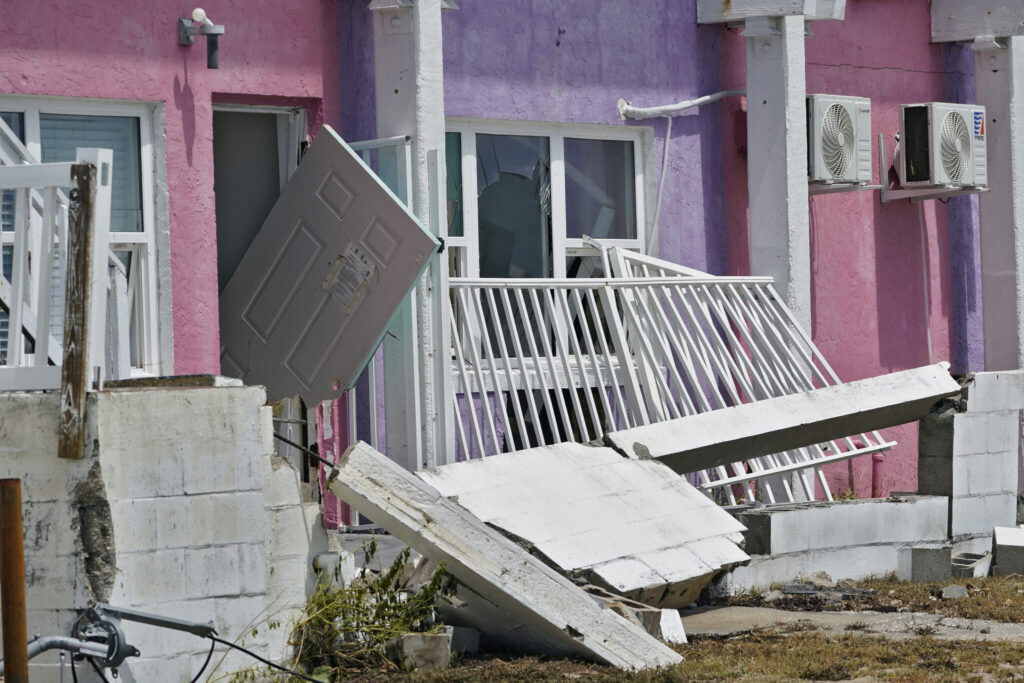
In Valdosta, a city of 55,000 in southern Georgia, resident Desmond Roberson, who took a drive with a friend to check out the damage, said that on one street a tree had fallen on nearly every house. Roads remained blocked by tree trunks and downed powerlines and traffic lights were still blacked out at major intersections. He said the few gas stations that were open had long lines.
“It’s a maze. … I had to turn around three times, just because roads were blocked off,” Roberson said.
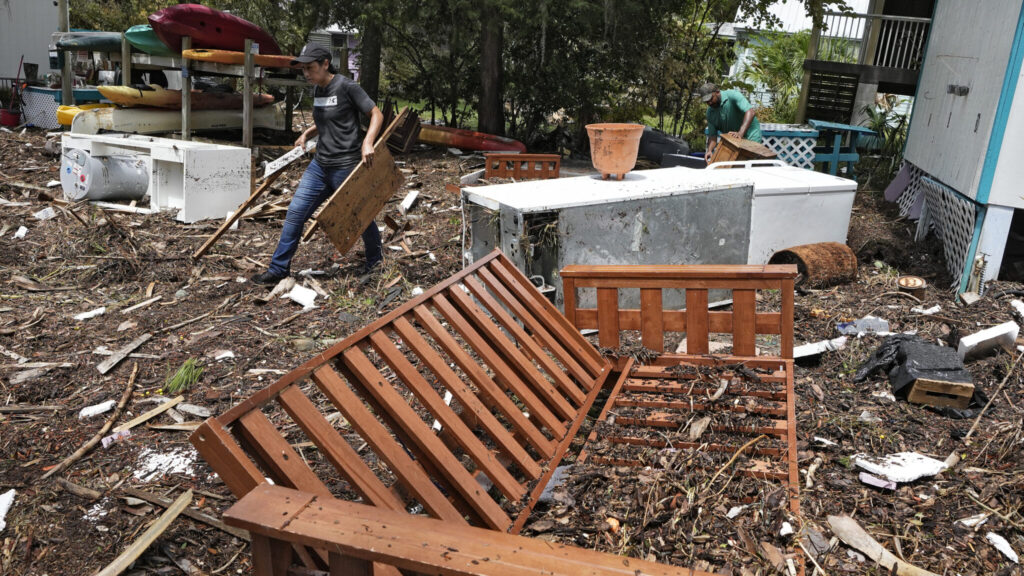
Nearly all of the 600 tarps that officials had set aside to cover damaged roofs had been claimed by Thursday morning, said Meghan Barwick, spokeswoman for surrounding Lowndes County.
More than 24,000 homes and businesses in the county of about 120,000 people remained without electricity, according to Barwick, who said residents should be prepared for several days more without lights or air conditioning.
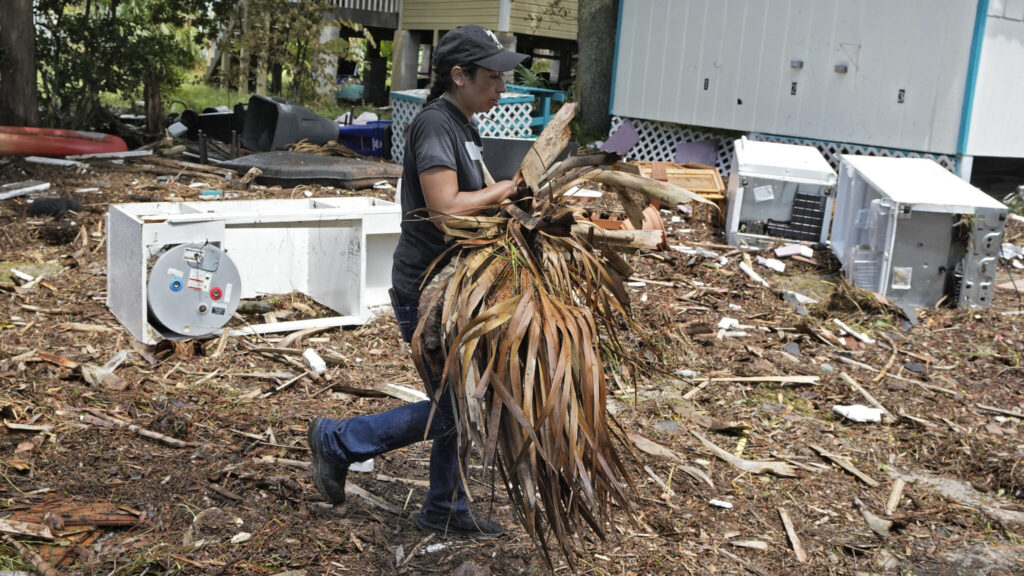
Rescue and repair efforts were in full force in Florida’s remote Big Bend area, where Idalia roared ashore with 125 mph (201 kph) winds Wednesday, shredding homes, ripping off roofs, snapping tall trees, and turning streets into rivers.
“I’ve seen a lot of really heartbreaking damage,” Florida Gov. Ron DeSantis said as he toured the area with his wife, Casey, and federal emergency officials.
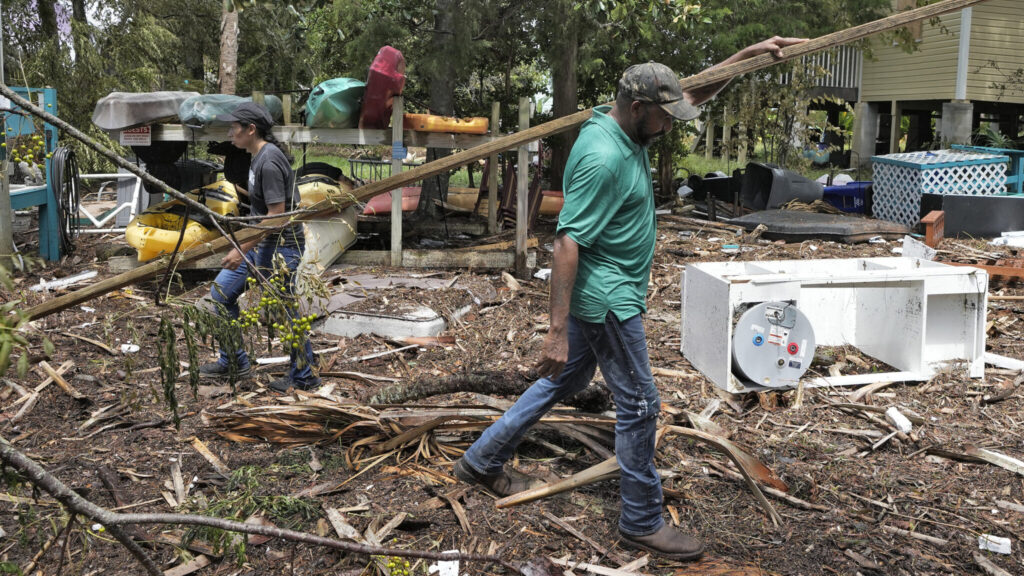
Before heading out to sea Thursday, Idalia swung east, flooding many of South Carolina’s beaches and leaving some in the state and North Carolina without power before heading back into the Atlantic Ocean. Forecasters said the weakened storm should continue heading away from the U.S. for several days, although officials in Bermuda warned that Idalia could hit the island early next week as a tropical storm.
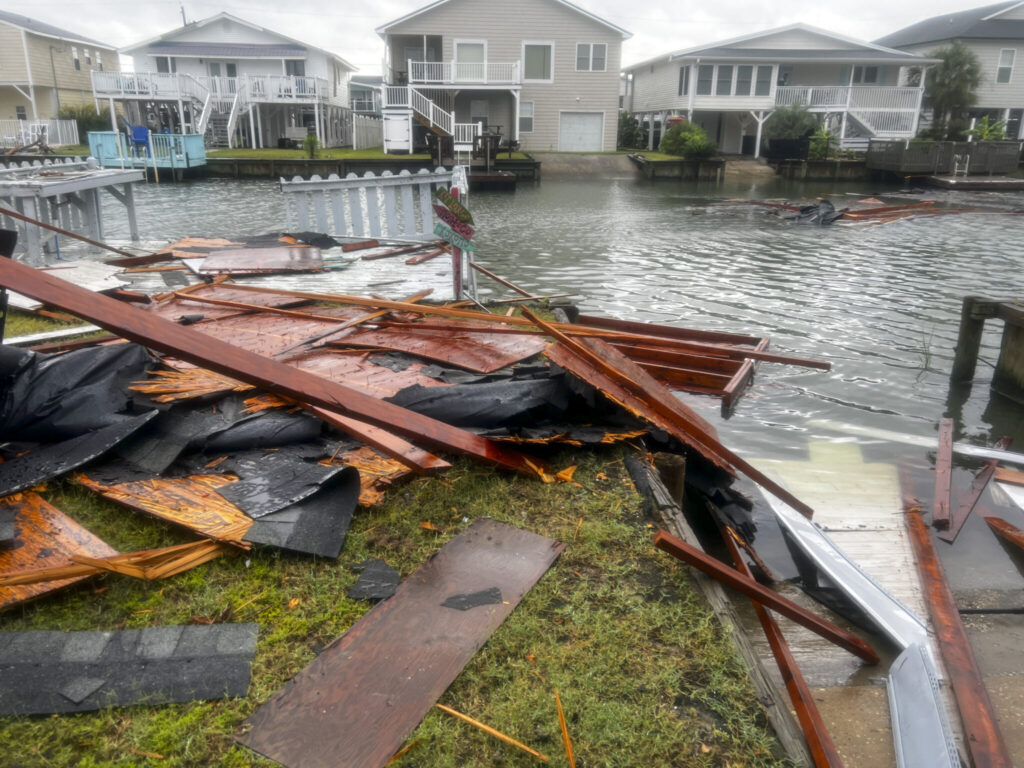
Thus far, authorities have confirmed one death, that of a man hit by a falling tree in Georgia. As many as a half-million customers were without power at one point in Florida and Georgia as the storm ripped down utility poles.
DeSantis noted that one church in the Big Bend area was swamped by more than 4 feet (1.2 meters) of water. “It was all very raw,” he said. “When you have your whole life’s work into, say, like a business that ends up under 5 feet (of water) – that’s a lot of work that you’ve got to do going forward.”
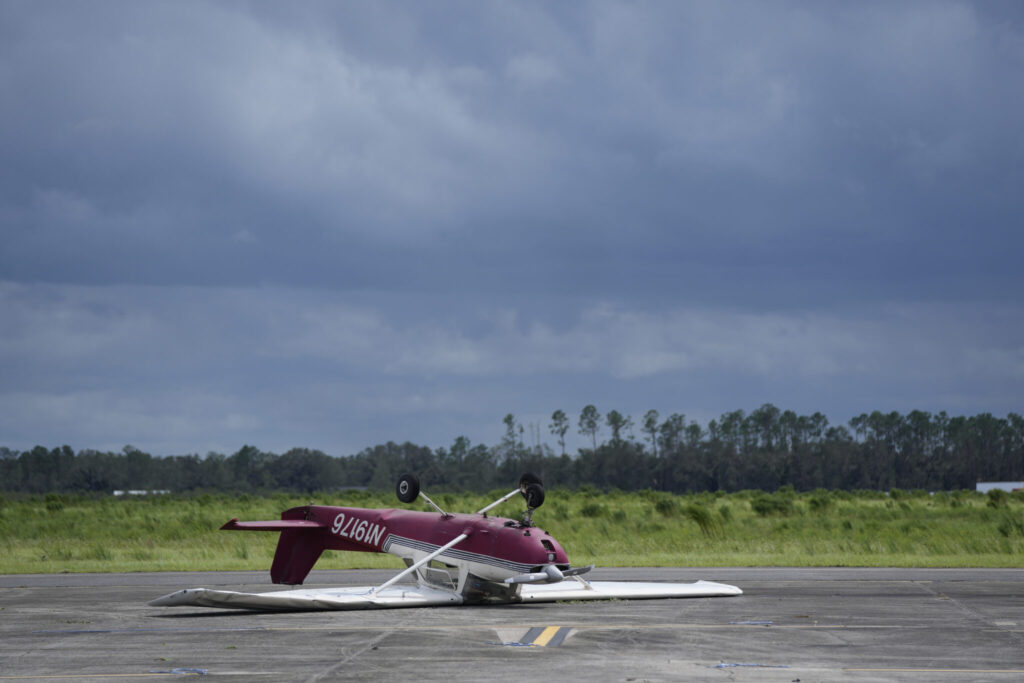
At Horseshoe Beach in central Big Bend, Florida, Jewell Baggett picked through the wreckage and debris of her mother’s destroyed home, finding a few pictures and some pots and pans. Fortunately, her mother had evacuated before the storm hit.
Baggett said her grandfather built the home decades ago and it had survived four previous storms.
“And now it’s gone,” she said, along with at least five to six other homes in the area. “Nothing left. A few little trinkets here and there.”
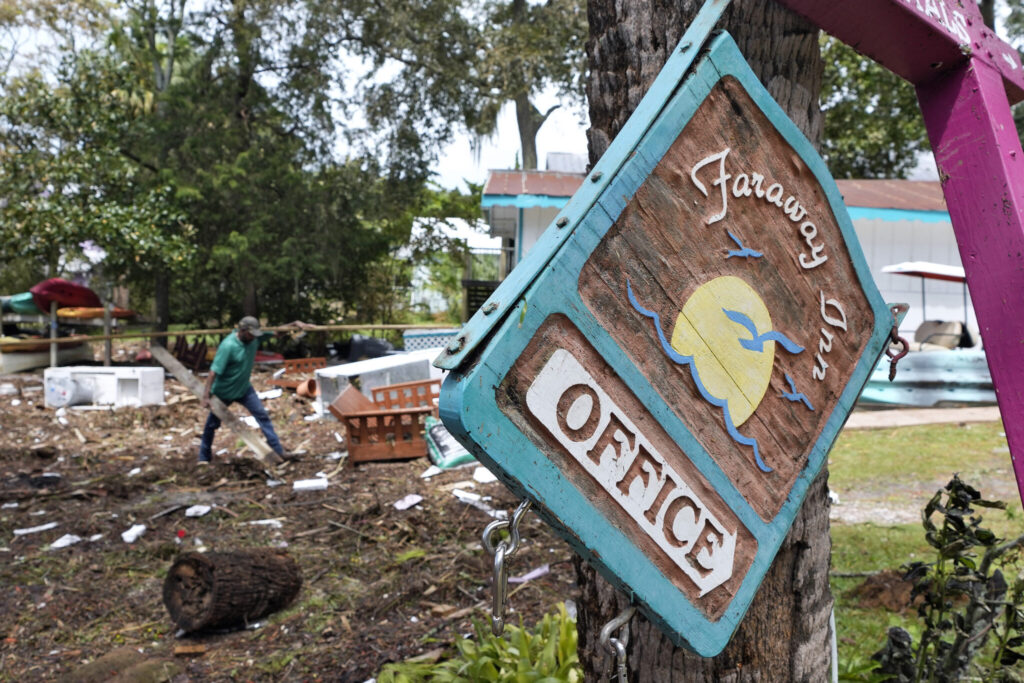
DeSantis noted that because the storm came ashore in the remote region where Florida’s Panhandle curves into the peninsula, it provided only glancing blows to Tampa Bay and other more populated areas. In contrast, Hurricane Ian last year hit the heavily populated Fort Myers area, leaving 149 dead in the state.
President Joe Biden spoke to DeSantis and promised whatever federal aid is available. Biden also announced that he will go to Florida on Saturday to see the damage himself.
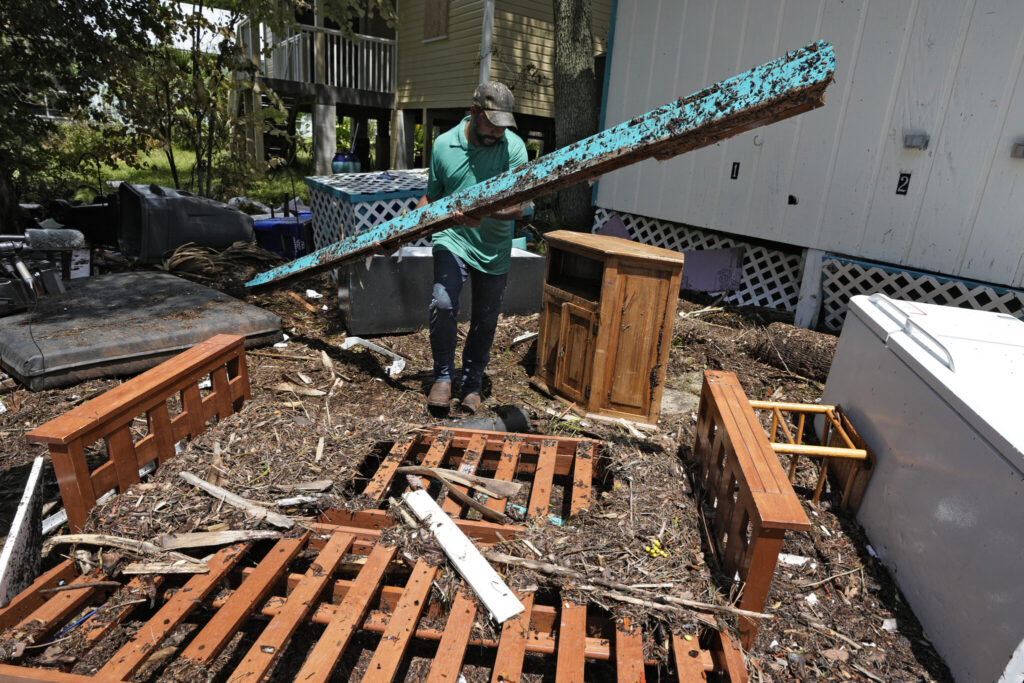
The president used a news conference at the Federal Emergency Management Agency’s headquarters to send a message to Congress, especially those lawmakers who are balking at his request for $12 billion in emergency funding to respond to natural disasters.
“We need this disaster relief request met and we need it in September” after Congress returns from recess, said Biden, who had pizza delivered to FEMA employees who have been working around the clock on Idalia and the devastating wildfires on Maui, Hawaii.
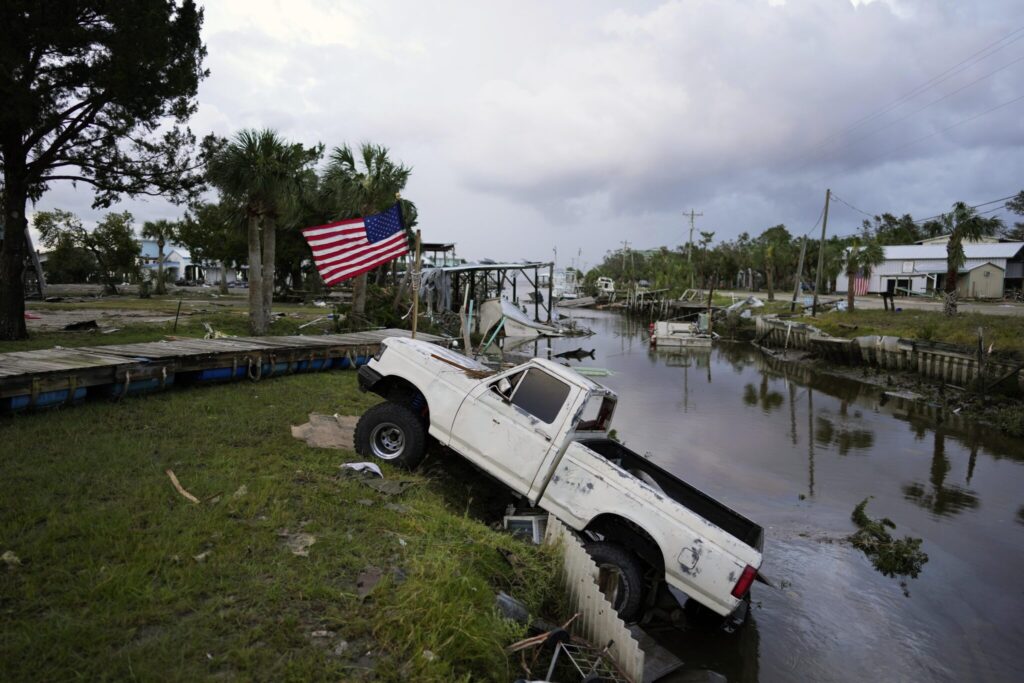
No hurricane-related deaths were officially confirmed in Florida, but the state’s highway patrol reported two people killed in separate weather-related crashes just hours before Idalia made landfall. A man in Valdosta, Georgia, about 80 miles (130 kilometers) inland, died when a tree fell on him as he tried to clear another tree out of the road, Lowndes County Sheriff Ashley Paulk said.
The storm was still a menace, with 90 mph (145 kph) winds, when it made a direct hit on Valdosta, Georgia Gov. Brian Kemp said.
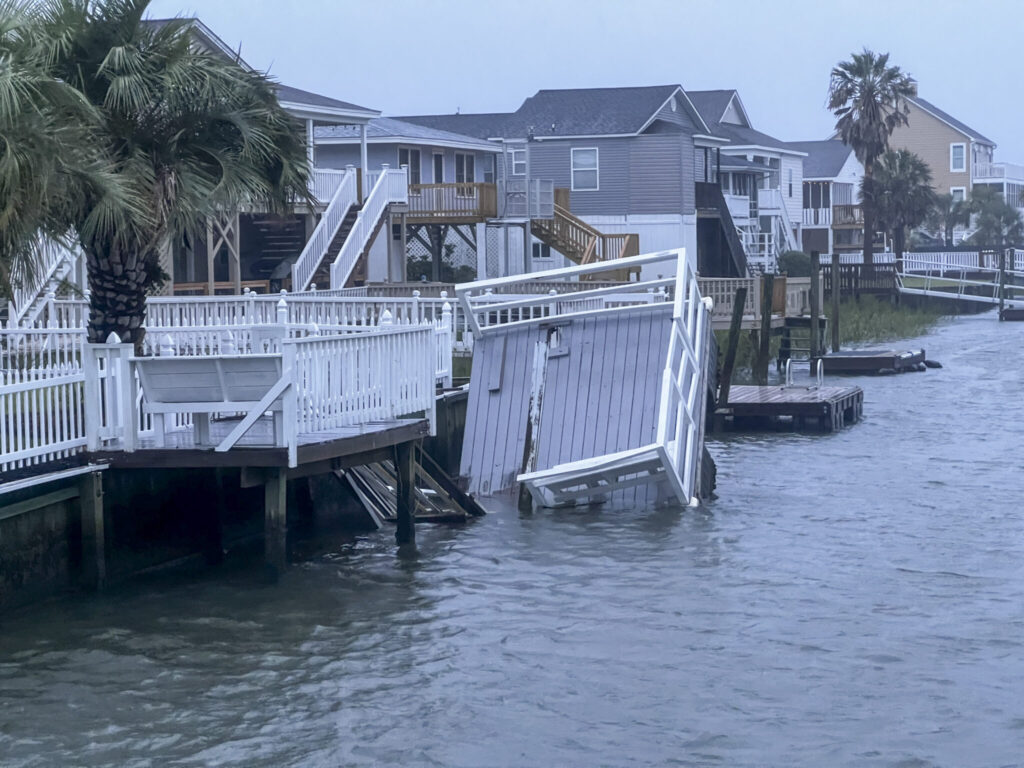
“We’re fortunate this storm was a narrow one, and it was fast moving and didn’t sit on us,” Kemp told a news conference Thursday in Atlanta. “But if you were in the path, it was devastating. And we’re responding that way.”
Chris Exum, a farmer in the south Georgia town of Quitman, estimates that he lost half or more of his pecan crop from Idalia, which he said left “a wall of green” with downed trees and limbs.
Some of the trees are 40 to 50 years old, he noted. “It takes a long time to get back to that point.”
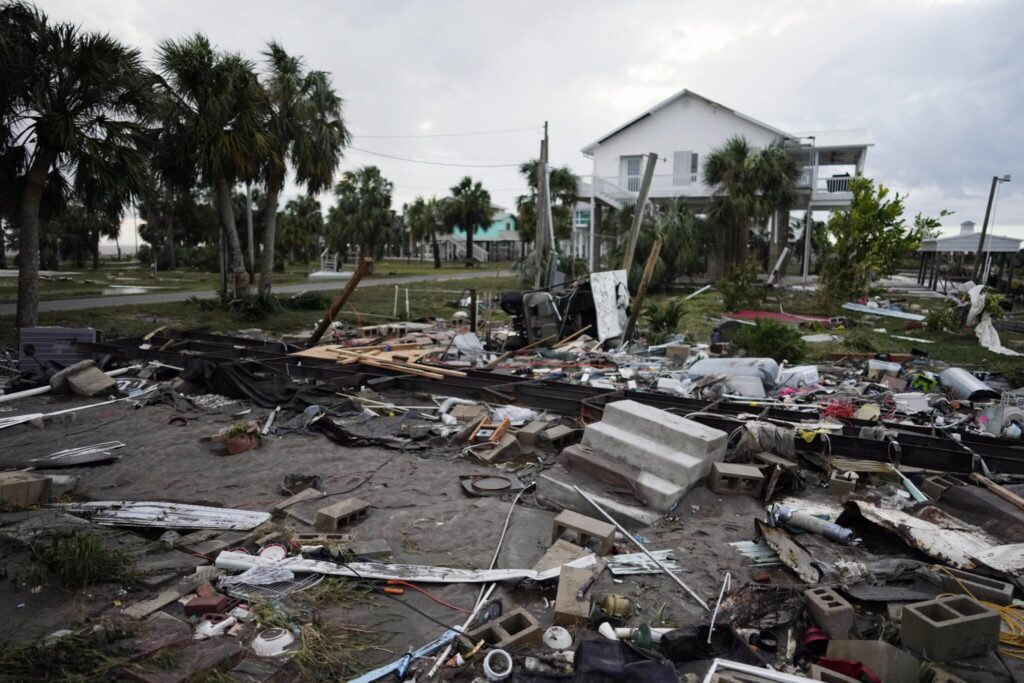
In South Carolina, the storm coupled with already really high tides to send seawater flowing over sand dunes in nearly every beach town, although in most places the water was only about ankle deep. In Charleston, Idalia’s surge topped part of the seawall that protects the downtown, sending ocean water into the streets and neighborhoods where horse-drawn carriages pass million-dollar homes and the famous open-air market.
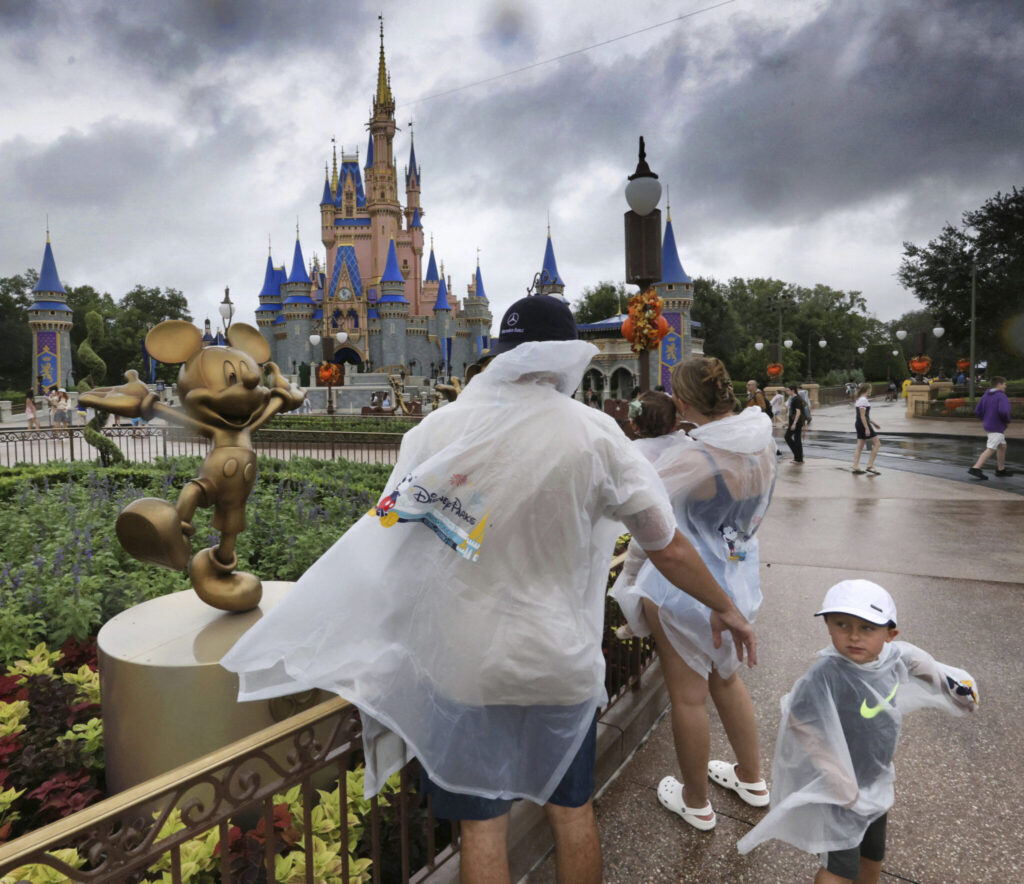
Preliminary data showed the Wednesday evening high tide reached just over 9.2 feet (2.8 meters), more than 3 feet (0.9 meters) above normal and the fifth-highest reading in Charleston Harbor since records were first kept in 1899.
Bands from Idalia also brought short-lived tornadoes. One flipped a car in suburban Goose Creek, South Carolina, causing minor injuries, authorities said. No major damage was reported.
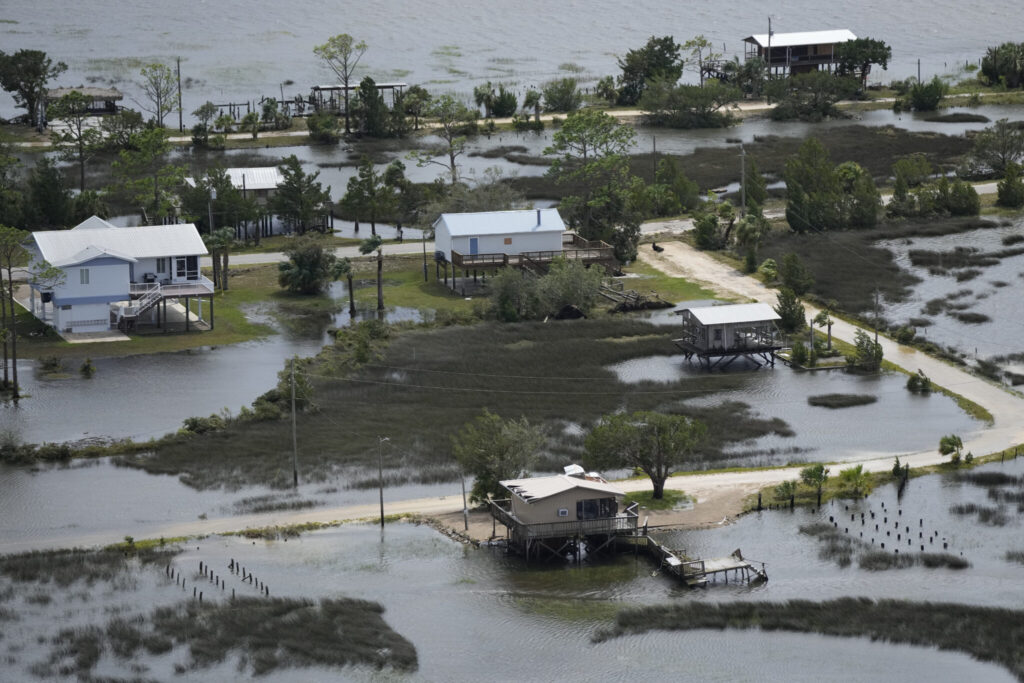
In southeastern North Carolina, up to 9 inches (23 centimeters) of rain fell in Whiteville, flooding downtown buildings. That heavy rain swelled creeks and rivers and forecasters warned places downstream on the Pee Dee and Lumber rivers could flood, although it will be well below the historic crests that devastated entire towns after Hurricanes Florence and Matthew.

